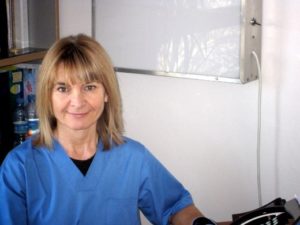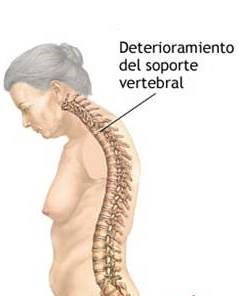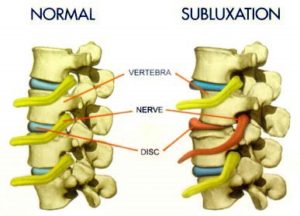What is it? How is it treated? How can it be prevented? Some scientific research news
Dra. Angela Olaru, DC, PhD
Centro de salud integral Biovertix
www.biovertix.com
www.angelaolaru.com
Osteoporosis is a very widespread ‘modern’ disease and consists of excessive loss of bone mass.
It mainly affects postmenopausal women, but also men, and can reach levels of serious pathology, such as vertebrae and rib fractures.
How is it treated?
It is currently treated with various types of drugs. The most used are bisphosphonates: alendronate (Fosamax), risedronate (Actonel, Atelvia), ibandronate (Boniva), or zoledronic acid (Reclast).
Drugs called Selective Estrogen Receptor Modulators (SERMs) such as Raloxifene (Evista) are also used.
Both types of drugs act by stopping the osteoclastic process (bone destruction) but have among the ‘rare’ side effects, fracture of the femur and necrosis of the jaw.
Another type of drug is denosumab (Prolia), a monoclonal antibody, which produces results like bisphosphonates, in terms of bone density. However, according to the Mayo Clinic, recent research indicates that after stopping this medication, there may be a high risk of vertebrae fractures.
Synthetic estrogen – based hormone replacement therapy (HRT) is also used to slow bone loss.
Unfortunately, these types of drugs can have quite serious side effects. Some of them, according to the US Medical Vademecum (Physician Desk Reference 1996) may be: breast or uterine cancer, thrombophlebitis, or ictus. (1,3,5)
Of course, many new drugs are being investigated to stop osteoporosis, but the best thing would be to prevent it.
How can osteoporosis be prevented?
In order to prevent it, we must know its causes.
The latest research mentions two important causes:
- Excessive consumption of animal proteins, carbohydrates, or sugars.
- Lack of movement of the skeleton and bones, especially the spine.
Some recent studies (1,2,7) in the field of nutrition and dietetics, point out that one of the main causes of osteoporosis is the modern diet based on animal proteins, carbohydrates, and sugars, and very poor in minerals, vitamins, enzymes, and coenzymes.
Excess of animal proteins such as meat, fish, eggs, and dairy products leads to the accumulation of acid metabolites. To neutralize them, the body gradually consumes its reserves of alkaline mineral salts, deposited mainly in the muscle mass: potassium, magnesium, silicon, manganese, zinc, copper, boron, etc. (1,2,7).
When stores get too low, the body draws on skeletal stores of calcium phosphate, causing osteoporosis.
According to a clinical research study, conducted in the US, following the modern Western (high protein) diet, bone mass would be lost by 4% per year. That is, in ten years it may lose 40% and in 20 years 80%. (2)
If the osteoporotic process begins around the age of fifty, it means that at seventy “the bones would break with a blow.”
Considering that today the average life expectancy exceeds eighty-five years, prevention is of vital importance.
Longevity entails a gradual loss of soft tissue flexibility, hormonal deficiencies, difficulty in nutrient absorption, as well as accumulation of toxins and acid metabolic remains.
“The vase fills up little by little, but the good news is that it can be emptied and cleaned regularly.”
A large study, published in 1988, has shown that, in vegetarian women, the osteoporotic process is much slower. (8) Therefore, we must take much more fresh vegetables and fruits.
We should also take vitamin and mineral supplements in the form of organic salts, with high bioavailability (absorption), and always recommended by health professionals with adequate training in the field of nutrition and dietetics. (1.7)
Many calcium supplements, which are sold to prevent osteoporosis, are not healthy. Calcium and magnesium supplements in the form of inorganic salts, such as carbonates, do not help restore bone mass.
In addition, they can cause calcification of the soft tissues (tendons, cartilage) and be deposited on the arterial walls. Therefore, they may contribute to osteoarthritis and arteriosclerosis (2.7), kidney stones (1.5), hypertension (6), gastric acidity (4,14), etc.
The best calcium supplements are in the form of hydroxyapatite, chelated, or citrate.
So before buying a calcium supplement, whether it is recommended by a doctor or another health professional, it is advisable to look at the composition.
In general, it is better to avoid inorganic mineral salts, especially carbonates, oxides and sulfates.
THE MYTH OF DAIRY
Milk and cheeses do not help prevent osteoporosis.
It is true that milk contains calcium, in the form of lactate, but it also contains proteins such as casein and a-lactalbumin, as well as lactose.
Dr. Walter Willet, MD, PhD, professor of medicine, epidemiology, and nutrition, from Harvard Medical School, explains in his book “Eat drink and be healthy” (1) that milk proteins, like all animal proteins, generate acid metabolites that tend to lower blood pH.
Our blood pH is approx. 7.36, slightly alkaline, being a vital sign.
In the event of a drop in pH, the nervous system organizes the uptake of mineral salts, stored in muscles and bones, to neutralize blood acidity. So, excessive dairy consumption increases osteoporosis.
In addition, to metabolize lactose – a type of sugar – the enzyme lactase is needed, which appears to gradually decrease after skeletal growth. That is why most adults and some children have lactose intolerance.
Based on several studies, which Dr. Walter Willet mentions in his book, excessive consumption of milk and its derivatives, especially cheese, could cause asthma, allergies, prostate, and ovarian cancer. (1)
Another cause of osteoporosis is loss of flexibility and movement of the spine.
Vertebrae are trabecular (spongy) bones and are at higher risk of osteoporosis than other compact bones in the skeleton.
Due to trauma and, above all, bad posture habits, the vertebrae can lose their correct alignment and joint movement.
The chiropractic term, which describes these spinal biomechanical alterations, is ‘vertebral subluxation’.
Vertebral subluxations occur from early childhood and are usually asymptomatic (silent) for decades, like dental caries.
Meanwhile, they cause asymmetry of the paravertebral muscles, gradually decrease the space through which the spinal nerves pass and prevent the correct nutrition and growth of the discs, cartilage, and vertebrae.
Therefore, vertebral subluxations may predispose to early osteoarthritis and osteoporosis.
CHIROPRACTIC CARE CAN HELP SLOW DOWN AND PREVENT OSTEOARTHRITIS AND OSTEOPOROSIS.
Pepi’s story
More than 10 years ago, Pepi came to our center complaining of back pain. Like many of our postmenopausal patients, in addition to osteoarthritis, Pepi had osteoporosis.
The rheumatologist had prescribed bisphosphonates, but she decided to follow our chiropractic and physiotherapy protocol, change her diet, and take calcium supplements and other micronutrients, which we recommended.
The result was very satisfactory. Not only did her pain disappear, but the bone densitometry report (BMD), showed that her bone mass increased. This is her video-testimony: https://www.youtube.com/watch?v=0J_PVtdjOGk.
Chiropractic is one of the most modern health sciences. Its main objective is to recover and maintain the correct vertebral alignment and to optimize the passage of the spinal nerves.
Chiropractic doctors are primary health care professionals. Most of us practice in private clinics or centers. In our integrative health center, we work as a multidisciplinary team. (www.biovertix.com)
On the first visit we perform a thorough physical-clinical examination and, based on the findings, we usually recommend a series of ‘vertebral adjustments (chiropractic correction techniques), complemented by physiotherapy and osteopathy. We also do basic health education and teach a daily routine of exercises for the spine as well as personalized postural exercises.
If want we prevent osteoporosis and osteoarthritis, we must ensure optimal alignment and movement of the spine starting from childhood.
Children play, jump, practice tennis, soccer, basketball, volleyball, etc. They are healthy sports, but they are all asymmetrical, that is, they exercise the muscles of the arms, legs, and spine, more on one side than on the other.
Along with bad postural habits, asymmetric sports, twist the spine, during full growth. The vertebrae can become misaligned, and ‘subluxations’ appear. Unless corrected regularly, children can develop scoliosis and kyphosis, which predispose to osteoporosis and osteoarthritis in adulthood.
We need more health education!
Thanks to a massive education on the part of dentists, we have learned that to prevent teeth decay, and to correct malocclusion, dental care must start from childhood. In fact, many teens go through orthodontics, but very few realize that, while their teeth gradually move and straighten, their vertebrae become misaligned, and scoliosis develops. https://www.angelaolaru.com/?s=relacion+dientes+columna
In conclusion, to prevent osteoporosis and preserve better overall health for life, we recommend regular chiropractic check-ups and spinal care for everyone: adults and especially children.
Bibliography:
- Willet, W.C. Eat drink y be heathy: the Harvard Medical School guide to heathy
eating” p. 139-151, Simon, Schuster Source, NY, 2001
- Morter Jr. MT Your Healthis your choice Fell Publishers (1990): 161-170
- NM Lewis, “Calcium Supplements and Milk: Effects on Acid-Base Balance and on Retention of Calcium, Magnesium and Phosphorus”, American Journal of Clinical Nutrition 49 (1989): 527
- MS Sheikh et al, “Gastrointestinal Absorption of Cacium from Milk and Calcium Salts, “New England Journal of Medicine 317 (1987): 532
- RG Wells, “Should All Postmenopausal Women Receive Hormone Replacement Theraphy? “Senior Patient “ (1988): 837
- M: Parrott-Garcia and D:A: McCarron, “Calcium and Hypertension, “Nutrition Revierws 42 (1984): 205
- B Kamen, Osteoporosis: What It Is, How to Prevent It, How to Stop It (New York: Pinnacle, (1984), p.40
- AG Marsh et al, “Vegetarian Lifestyle and Bone Mineral Density,”American Journal of Clinical Nutrition 48 (1988):837
- P McNair, “Bone Mineral Metabolism in Human Type 1 (Insulin Dependent) Diabetes Mellius, “ Danish Medical Bulletin 35 (1988):109
- Ac Santora, “The Role of Nutrition and Exercise in Osteoporosis”; American Journal of Medicine 82 (1987): 73
- B Riis, K Thomsen, and C Christiannsen, “Does Calcium Supplementation Prevent Postmenopausal Bone Loss? “New England Journal of Medicine 316 (1987):173
- RJ Dudl et al, “Evaluation of Intravenous Calcium as theraphy for osteoporosis, “American Journal of Medicine 55(1973):631
- HF DeLuca, “The latest Information on Vitamin D and Bone Status”, Complementary Medicine May/June (1986):14
- Harvard Medical School Health Letter, March 1976, p.2
- Nutrition Today, March/April (1987): 22
- Keller TS, Harrison DE, Colloca CJ, Harrison, Janik TJ “Prediction of osteoporotic Spinal deformity, Spine 2003 Mar 1: 289 (5), 455-62




